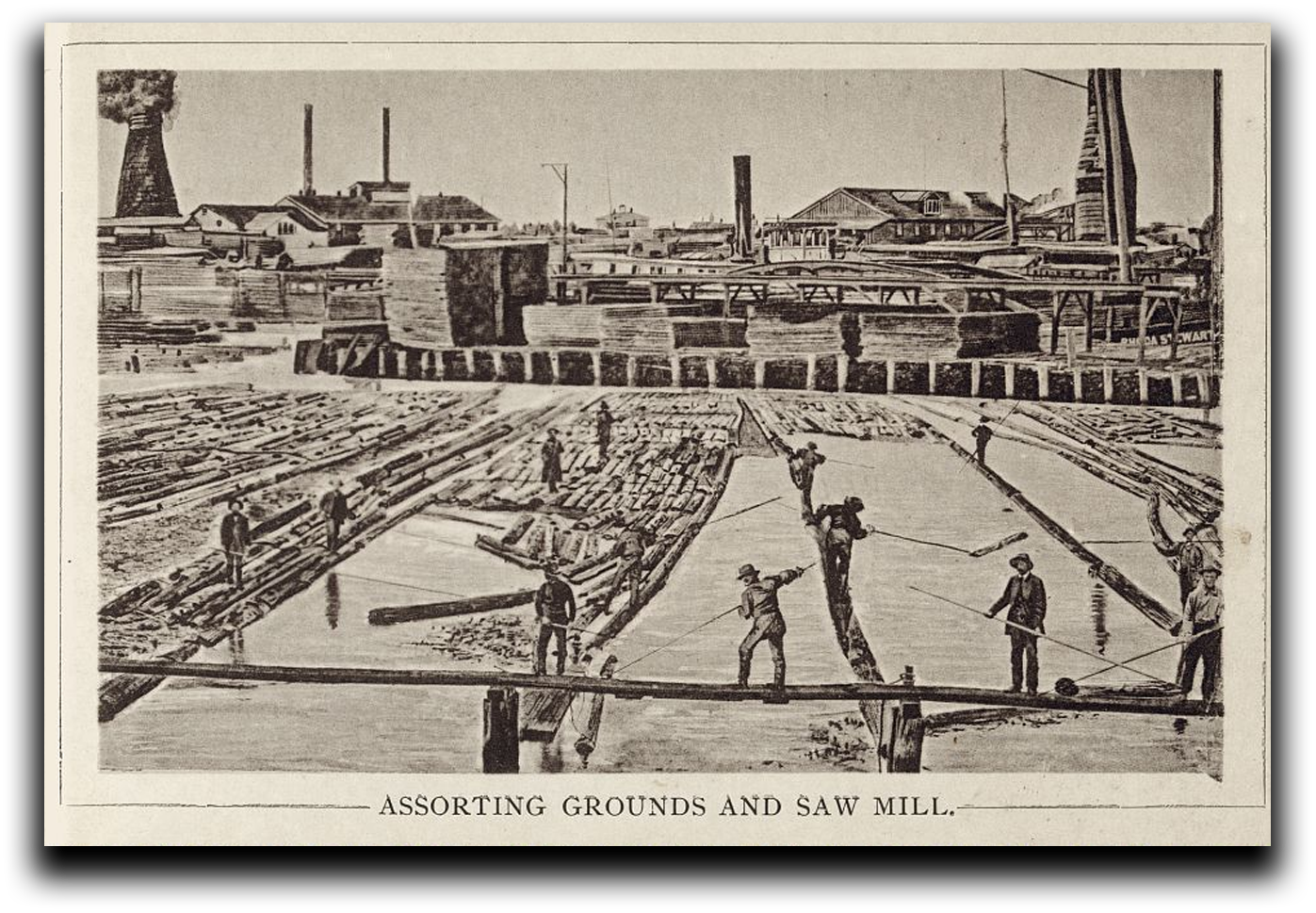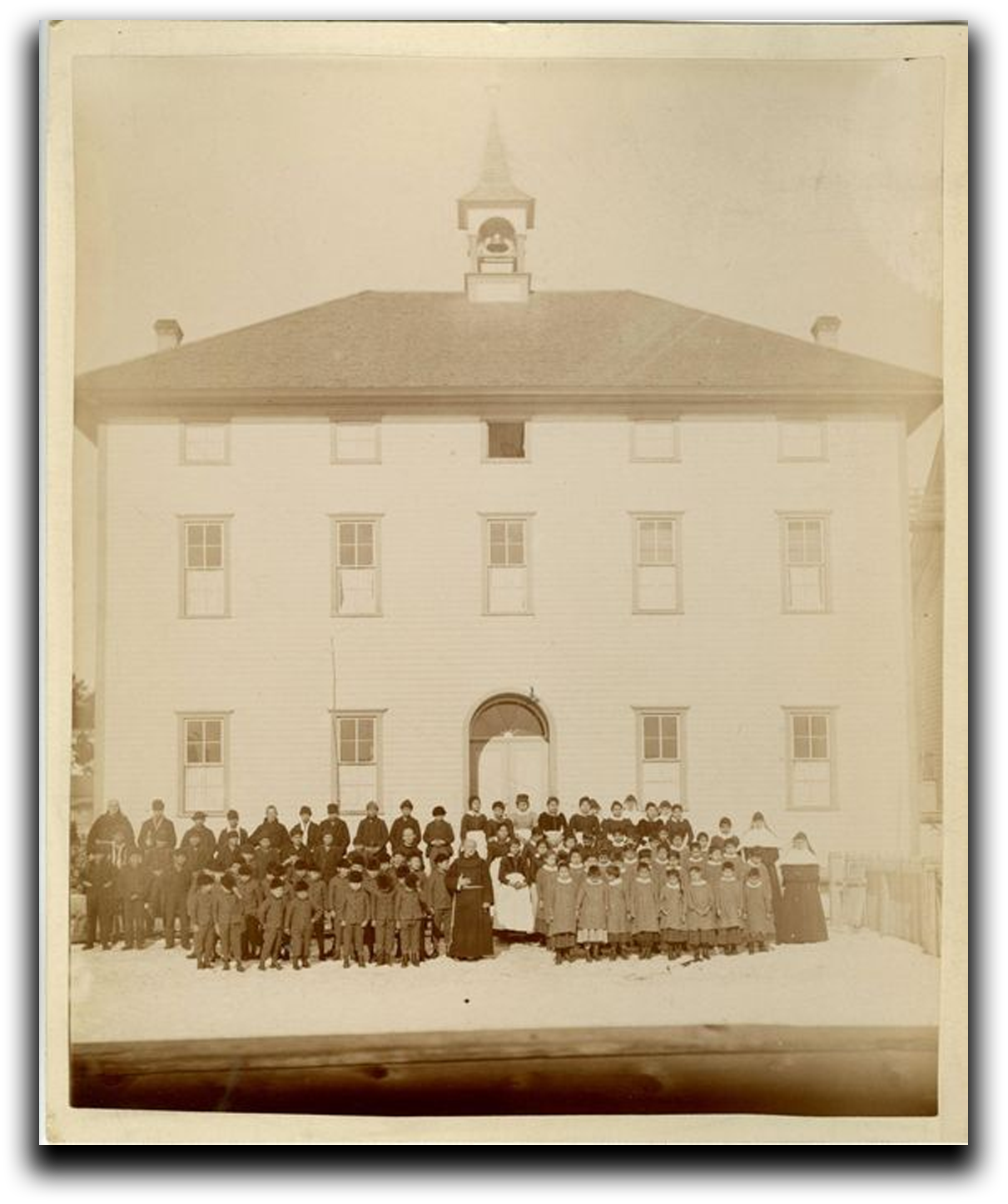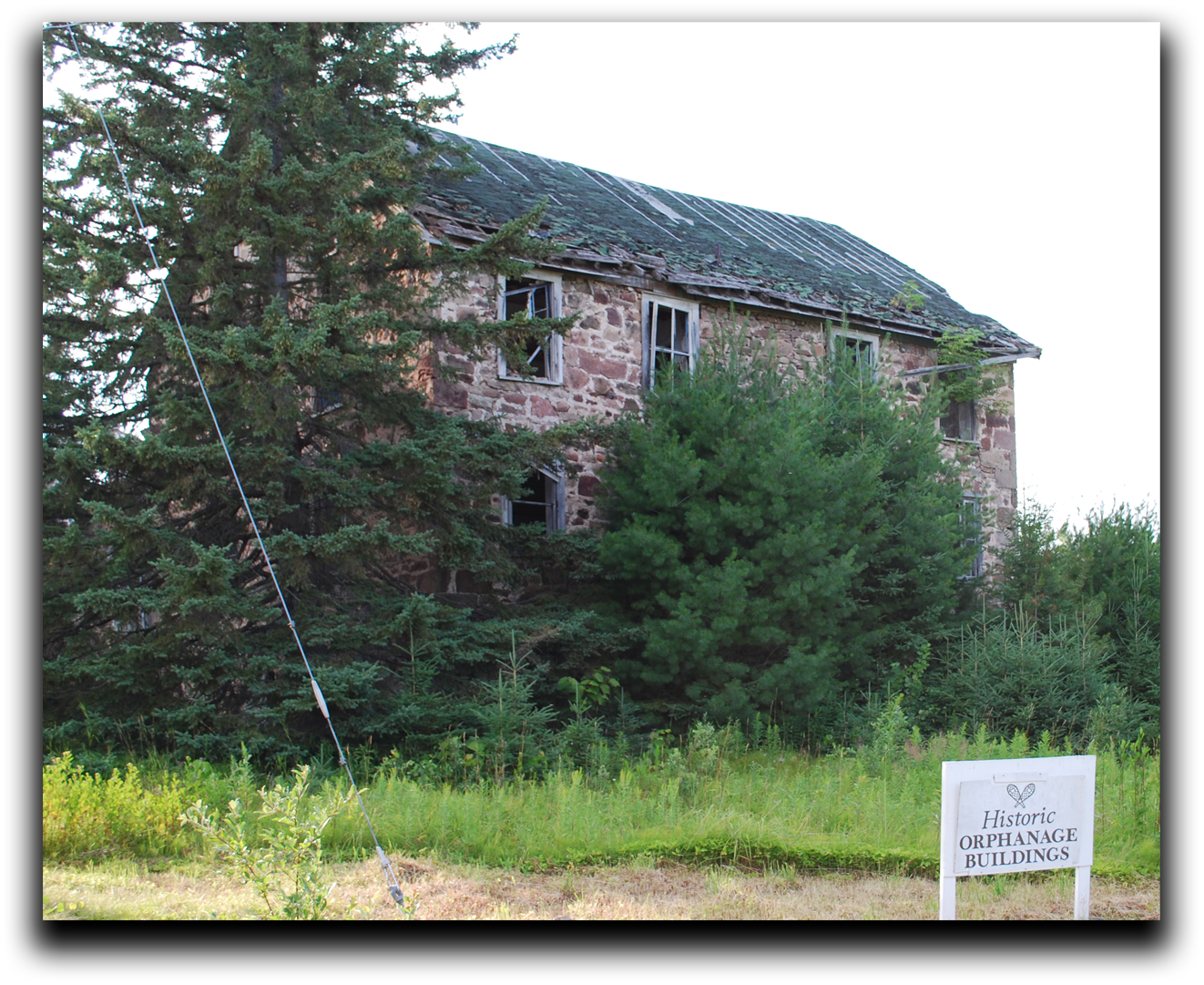1870
The United States Congress authorizes $100,000 to operate Federal Industrial Schools for the purpose of educating and assimilating Indigenous Americans.
1875
While allotments won’t become common practice until after the Dawes Act, in 1875, 302 Ojibwe in L’Anse receive allotments totaling 23,575 acres of land.
1877
- A west wing is added to St. Josephs in Assinins as a girl’s dormitory for the first girls to be boarded.
- An episcopal mission is created in Rockland.
1878
- An epidemic of Scarlet Fever hits the Upper Peninsula leading to the deaths of several Anishinaabeg. The Indian Agent at the time proposes that the government should provide more medical assistance to the Anishinaabe people to prevent further deaths from this and other diseases.
- A measles epidemic occurs in Waiskai Bay and the local mission is converted into a hospital to treat the ill.
1880
Native Americans are employed as wood choppers and ore loaders in the mines across the Upper Peninsula as a way to make money after wild game animals begin to disappear due to increased settlement.

1881
- Father Gerhard Terhorst builds an orphanage at Holy Name of Jesus Catholic Missions in 1881. The orphanage in Assinins was originally meant to house orphaned boys.
- Episcopal missions are created in St. Ignace and Menominee. A church would later be built in Menominee in 1885.

1882
- While smallpox is no longer a significant problem, epidemics continue to occur in isolated areas. In 1882, one such epidemic hits Hannahville and kills 20 of the 200 inhabitants. Many of the deaths are children and the mission school is forced to close down.
- The Ojibwe at Bay Mills request the government to establish a school in the area.
1884
- After being shutdown for several years, the Holy Childhood of Jesus School in Harbor Springs reopens. It no longer serves just as a day school, but also operates as a boarding school.
- Indian Agent Edward P. Allen begins to establish day schools across the Mackinac Indian Agency area. In 1884, eleven schools exist including schools in Munising, Iroquois Point, and Hannahville.

1885
Indian Agent Edward P. Allen proposes the idea of sending all the Indigenous people in the state of Michigan to one large reservation. He says that this will prevent encroachment by white settlers and that, “the race will disappear in Michigan within 50 years.” While allotments are not yet standard, several have been given out, including 7,366 acres in L’Anse allotted to 95 members of the Ojibwe tribe. Many of these allotments are in heavily forested areas while former Anishinaabe lands are purchased by white settlers.
1887
While allotments have already been made in some areas, including L’Anse, in 1887, Congress officially passes the Land in Severalty Act, also known as the Dawes Allotment Act. This act authorizes the federal government to break up tribal lands and allows only those who accept individual allotments to become citizens of the United States. The objective of the act is to assimilate and, as a result, over 90 million acres of land across the country are taken and sold to non-native settlers. The government begins to operate manual labor boarding schools, sometimes called industrial schools, based on Carlisle.
1888
The Boarding School in Assinins becomes a government contracted school.
1889
- The Mackinac Indian Agency is abolished.
- Holy Childhood in Harbor Springs becomes a government contracted school.
1891
The United States begins the process of developing an Indian Industrial School in Michigan. First, Congress passes Public Act 74, which provides the cession of property from the State of Michigan for the purpose of constructing said school. Congress then appropriates $25,000 for the purchase of 200 or more acres of land in Isabella County. By building Mount Pleasant, the United States fulfils its promise in the Treaty of Detroit from 1855, in which they told the Anishinaabe people they would build a school for them in the state of Michigan.
1892
On October 18th, the first cornerstone is laid for the new Mount Pleasant Indian Industrial Boarding School. There is a large celebration where the Grand Master of the Free and Accepted Masons leads the ritual while the Grand Chaplain leads the crowd in a prayer to bless the new school.

1893
On January 3, the Mount Pleasant Indian Industrial School opens its doors. Initially, it only serves seventeen students. As the years go on, Mount Pleasant reaches an average enrollment of more than 300 students a year with students from multiple states including Michigan, Minnesota, Wisconsin, and New York. Mt. Pleasant focuses on vocational training, such as Agriculture, Home Economics, Carpentry, and Welding. There are also extracurriculars including a Brass Band and a number of sports teams.


1899
- The first class graduates from Mt. Pleasant Indian Industrial School. Official documents from this time show that these students often complete only 9 years of education. After graduating, some students, mainly boys, go on to attend other schools such as Carlisle in Pennsylvania.
- Northern Michigan University is founded on Anishinaabe land that was ceded in the Treaty of La Pointe. - A new Mackinac Indian Agency is established.
- The girls dormitory at Mt. Pleasant Indian Industrial School is set on fire. At first it is believed that the fire was caused by a defective flue or spontaneous combustion in the attic, however a sixteen year old student confesses to starting the fire as well as another fire in the laundry.
1902
Orphaned boys and girls from the Catholic Aemilianum facility, on Fifth and Altamont Street in Marquette, are transferred to St. Joseph's Orphanage in Assinins.
1906
The Sisters of St. Agnes of Fond du Lac, Wisconsin take over operations at the schoolhouse and orphanage in Assinins from the Sisters of St. Joseph.
1910
After the construction of the railroads in the 19th century, many of the Anishinaabe people who lived in southern Marquette are forced to relocate to the North Marquette Addition, this area is sometimes referred to as Indiantown. During the 1910 census, the residents were listed as living on “no street” and in the “outskirts of the city”. The area is bound by Hawley Street to the north, Presque Isle Avenue on the east, Wright Street to the south, and Wilkinson Street and a large swamp area to the west. The children who live in this area attend a segregated school which was not closed until the 1960’s and the streets remain unpaved until 2010.
1913
Congress acknowledges the Hannahville band of Potawatomi, and purchase 3,400 acres of land for the tribe to use.
1915
Holy Family Orphanage in Marquette opens. This orphanage is designed to serve only white children, however some of the first residents are 60 Anishinaabe children. These children came from St. Joseph’s Orphanage in Assinins after being sent away because of overcrowding.

1917
Several Anishinaabe fight in the Army and Navy during the First World War. This includes 20 students from the Mt. Pleasant Indian Industrial School.
1922
Many boarding schools rely on child labor for maintenance as well as to make money. For example, during the 1922-1923 school year, the Mt. Pleasant Indian Industrial School makes 2,648 off of goods that students working in the laundry produce.

1924
- A letter is sent to the superintendent of Mt. Pleasant by the Department of the Interior. The letter, sent in February, states that “there have been frequent complaints presented to the office concerning the whipping of pupils.”
- Meanwhile in Washington, Congress passes the American Indian Citizenship Act. This declares all Indigenous people of the United States to be citizens.
1925
Cora Reynolds Anderson is the first woman and Native American elected to the Michigan House of Representatives. Anderson, a member of the Ojibwe Tribe, she was born in L’Anse, Michigan.

1928
The Meriam Report is published by The Brookings Institution. The report calls for a new approach to Federal Indian Education, as well as federal relations with Indigenous people. The report also cites evidence of malnourishment, overcrowding, lack of medical care, child labor, and low standards for teachers at federally run boarding schools across the US.
1929
A new orphanage building is constructed at St. Joseph Orphanage and School in Assinins. This building is located south of the old school building. The new orphanage is named St. Josephs Home and is self sustaining with its own cattle and a garden.
Congress authorizes enforcement of compulsory school attendance for Indigenous students. Meaning that in cases where students tried to stay home, they would often be taken by police and other civil authorities in order to guarantee their attendance.
1934
The Johnson O’Malley Act and Howard-Wheeler Act are passed by Congress. These acts officially end the allotment process as well as provide funding to public schools for the education of Indigenous students.
Due to lack of enrollment, Mt. Pleasant Indian Industrial School closes down. For a short period of time, 60 orphans remained at the school while foster care was arranged, the majority of them going on to live with white families. Once homes were found for the orphans, the former school was sold to the state of Michigan for $1. An agreement, known as the Comstock agreement, is also made at this time. It states that the State of Michigan would “receive and care for in state institutions Indians resident within the state on entire equality with persons of other races and without cost to the Federal government.” This agreement delays the arrival of funds appropriated by the Johnson O’Malley Act until 1972. Throughout the years, at least 227 children died while attending the school at Mount Pleasant, many from diseases such as measles, meningitis, influenza, scarlet fever, typhoid fever, and tuberculosis.
The Ontonagon, L’Anse, and Lac Vieux Desert Reservations are combined to form the Keweenaw Bay Indian Community under the Indian Reorganization Act. The Constitution is aproved by the Department of the Interior in 1936.
The Michigan Indian Agency is established. The agency is based in Sault Ste. Marie.

1937
Both Bay Mills and Hannahville Indian Communities create and adopt a constitution. The constitutions are then approved by congress and the two tribes become federally recognized.

1953
The Ojibwe residents of Sugar Island form the “Original Bands of Chippewa Indians and Their Heirs.” At this time, both the Ojibwe at Sault Ste. Marie and Sugar Island were considered members of the Bay Mills Indian Community and had no lands of their own. However, many of the residents did not feel represented by the Bay Mills Indian Community, and so pushed for recognition as a separate tribe.
1956
St. Joseph Orphanage and School in Assinins closes down, leaving Holy Childhood of Jesus as the only Indian boarding school still in operation in the state of Michigan. All the children formerly housed at the orphanage are moved to Holy Family Orphanage in Marquette.
Congress passes the Indian Relocation Act, which encouraged Native Americans to leave reservations and move into cities. By 2000, the urban Native American population was 64% higher than it was prior to the beginning of termination in 1953.

